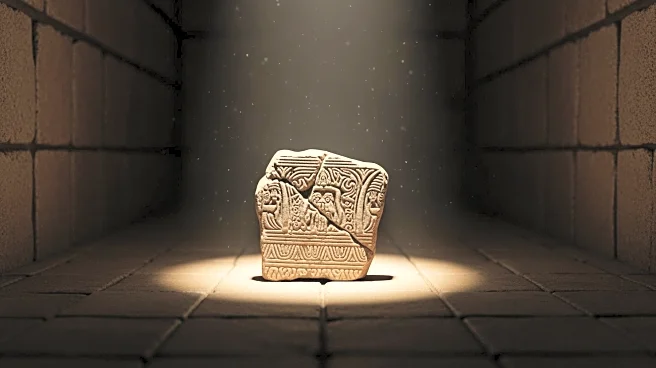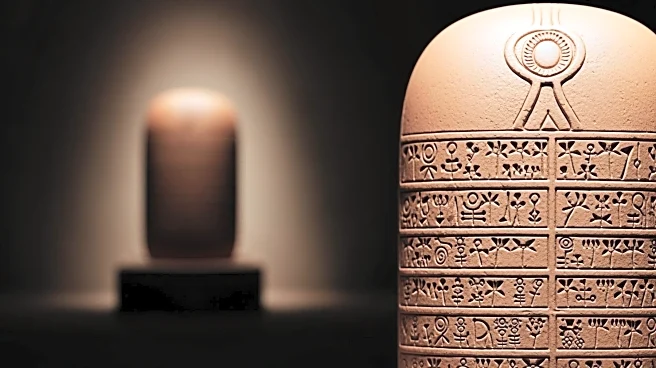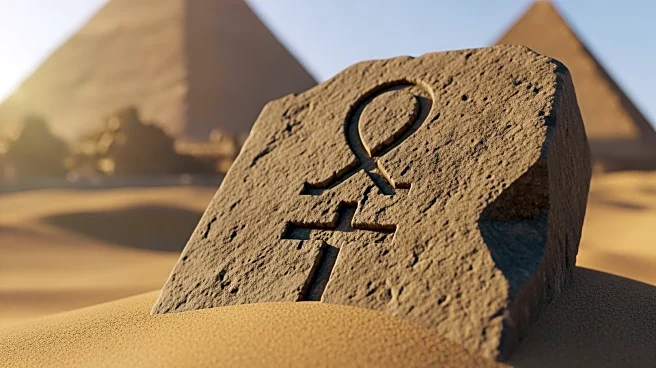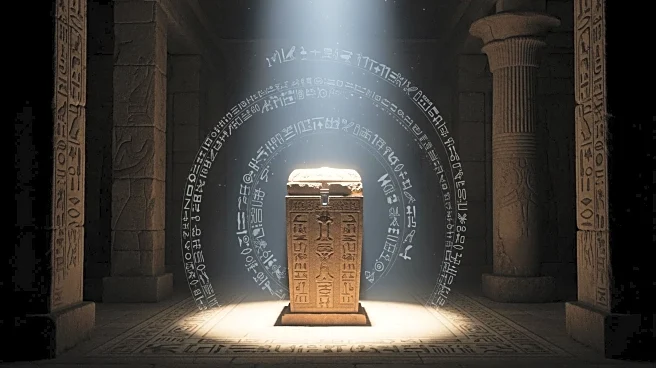What's Happening?
Researcher Sally Foster has revealed that the Stone of Destiny, a significant artifact in British royal history, has fragmented over time, with pieces scattered globally. The Stone, also known as the Stone of Scone,
has been integral to British royal coronations since the 14th century. Foster's study, published in The Antiquaries Journal, traces these fragments to various locations, including museums, jewelry, and a royal stagecoach. The Stone, which was returned to Scotland in 1996, is not the monolithic object it was once thought to be, but rather a collection of dispersed fragments. Foster's research highlights the Stone's symbolic power and contested legacy, with pieces found in places like the Queensland Museum and integrated into the Diamond Jubilee Stagecoach.
Why It's Important?
The discovery of the Stone of Destiny's fragments offers a deeper understanding of its historical and cultural significance. The Stone has been a symbol of power and national identity, particularly for Scotland, where it was used in coronations before being taken by the English. The fragments' dispersion reflects the Stone's tumultuous history and the ongoing interest in its provenance. This research could influence future studies on national symbols and their roles in cultural heritage. The findings may also impact how the Stone is perceived and preserved, potentially leading to new exhibitions or educational programs that explore its fragmented history.











